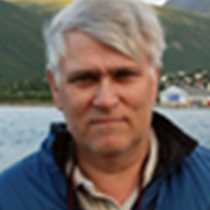Lithuania, Klaipeda
We are continuing our exploration of the southern parts to the Baltic Sea and hopping between nations. Every morning we wake up, slightly confused but ready to explore for us new territory, in a new country with a different language, religion, history and currency and still only a few hours sailing in between.
Today we are alongside in the only port in Lithuania, at Klaipeda, located on the Curonian Spit, near the large Curonian Lagoon. With several rivers leading inland Klaipeda became a significant trade post quite early. The city was established during medieval times but very little remains from those days. The history of the three small Baltic nations, they have always been on the crossroad between different larger Empires.
Over the last 500 years significant wars in Europe resulted in constantly changing borders. The Baltic States were under domination of several other empires for many centuries. For the later part, mainly by Tsarist Russia and gained their independence after the Versailles Conference. While Russia was experiencing its turbulent period with revolution and by a Civil War, five new nations emerged from its western borders. Poland, Finland together with the Baltic States, were able to establish and escape from the Russian domination until World War II. After WWII only Finland remained independent from Russia, until the downfall of Soviet Empire in 1991. Poland, Estonia, Latvia and Lithuania were again in 1991 able to escape the grip from the Russian Empire.
The stop here in Lithuania was short and brief and but very intense. Our expedition leader had set up three very different options, all ending with a short walking tour over the old cobblestone streets of Klaipeda. Here everybody was able to get a closer look of the old town and at the terpeniod resin (Amber). Some used the opportunity to buy Baltic Amber, which is usually regarded to be the most splendid.
In the morning, one group departed for the old estate of Palanga, now a park and museum. Palanga was originally designed by a French architect in 1824 as the country estate of Count Michal Tyszkiewics. By 1900 it became the home of an anti tsarist underground press whose authors were sent to Siberia in 1901. In 1960, the estate was converted to a botanical garden and the opulent mansion turned into a period museum with an exceptional amber collection.
Lithuania is a land of legends. As we walked through the tall trees of the elegant natural park of Palanga, every tree and rock seemed to house unseen but palpably real creatures emerging out of the pagan past.
The second option was a drive to a national park for a hike up to Witch Hill, located along the shore of the lagoon. At the trail we discovered a number of intriguing wood carvings, illustrating different mystical figures inhabiting the deep forest. At the top of the hill we also found a colony of Grey Herons and Great Cormorants. The guano from these fish eating birds is very rich and strong and over the years actually kills the trees. This forces the colony to move elsewhere in the forest but at the same time the guano fertilizes the ground, nourishing new re-growth resulting in healthier forest. Eco-system at its best!
A third option was to make a tour south to Ventes Ragas, which is a significant spit of land out into the Curonian Lagoon. Coastlines act as major flyways for land birds.
Now, in early fall, as millions of migratory birds are heading south to escape the oncoming winter, peninsulas like this tend to concentrate mainly migratory land birds in large numbers.
Here, we visited a Bird Observatory established as early as 1929, one of the first in the world. The warden Vytautus Jusys met us and gave a enthusiastic introduction to bird migration. He showed us huge Helgoland traps used for catching birds and took us around in the museum. It was very windy today and only a few birds had migrated during night. We were able to band (ring) three birds, two European Robins and one Marsh Warbler. Over the marshes lots of birds were swarming and two white-tailed eagles, in the distance, were playing in the wind.
Returning to National Geographic Explorer by lunch time, we set sail for Latvia. During the afternoon several presentations were given to explain the complexity of the historical of the Baltic Region, and how to improve your technique for photography.




